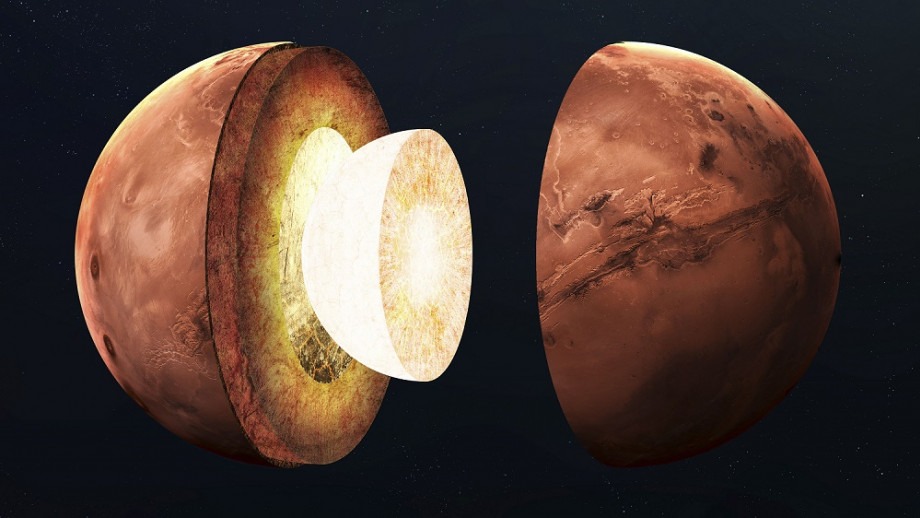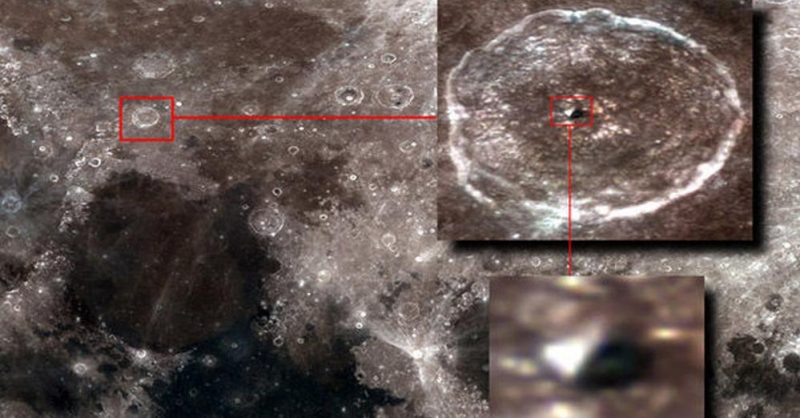An artist’s depiction of the Martian interior and the paths taken by the seismic waves as they traveled through the planet’s core. A recent study led by the University of Bristol has provided new insights into the liquid core at the center of Mars, enhancing our understanding of the planet’s formation and evolution. Credit: Image courtesy of NASA/JPL and Nicholas Schmerr
Researchers have gained new insights into Mars’ liquid core, discovering that it is slightly denser and smaller than previously believed, and contains a mixture of iron and other elements. The findings, obtained through the first-ever detections of seismic waves on the Martian core, contribute to our understanding of the planet’s formation and evolution.
A new study has uncovered intriguing insights into the liquid core at the center of Mars, furthering understanding of the planet’s formation and evolution.
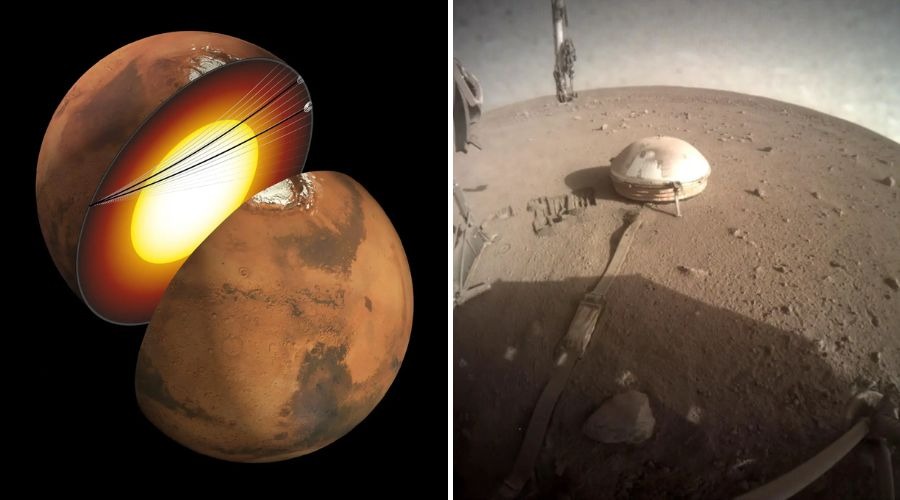
The research, led by the University of Bristol and published in the journal Proceedings of the National Academy of Sciences of the US, reveals the first-ever detections of sound waves traveling into the Martian core. Measurements from this acoustic energy, called seismic waves, indicate its liquid core is slightly denser and smaller than previously thought, and comprises a mixture of iron and numerous other elements.
The findings are all the more remarkable, as the research mission was initially only scheduled to last for a little over one Mars year (two Earth years). Despite Martian storms hastening the accumulation of dust and reducing power to the NASA InSight Mars lander, NASA extended its stay, so geophysical data, including signals of marsquakes, continued to be gathered until the end of last year.
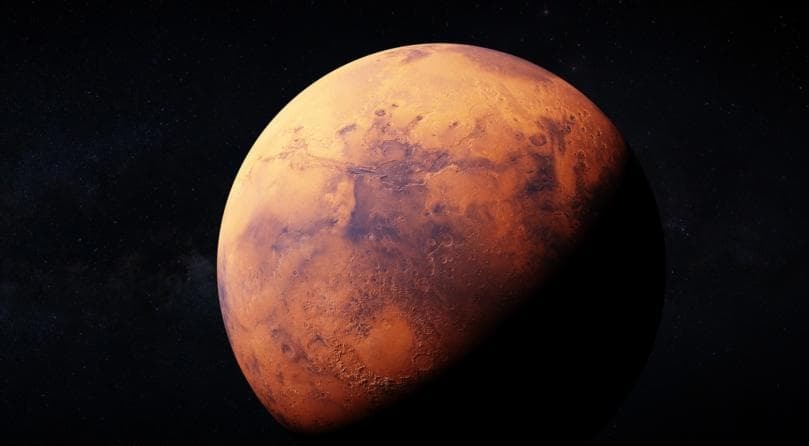
Lead author Dr. Jessica Irving, Senior Lecturer in Earth Sciences at the University of Bristol, said: “The extra mission time certainly paid off. We’ve made the very first observations of seismic waves traveling through the core of Mars. Two seismic signals, one from a very distant marsquake and one from a meteorite impact on the far side of the planet, have allowed us to probe the Martian core with seismic waves. We’ve effectively been listening for energy traveling through the heart of another planet, and now we’ve heard it.
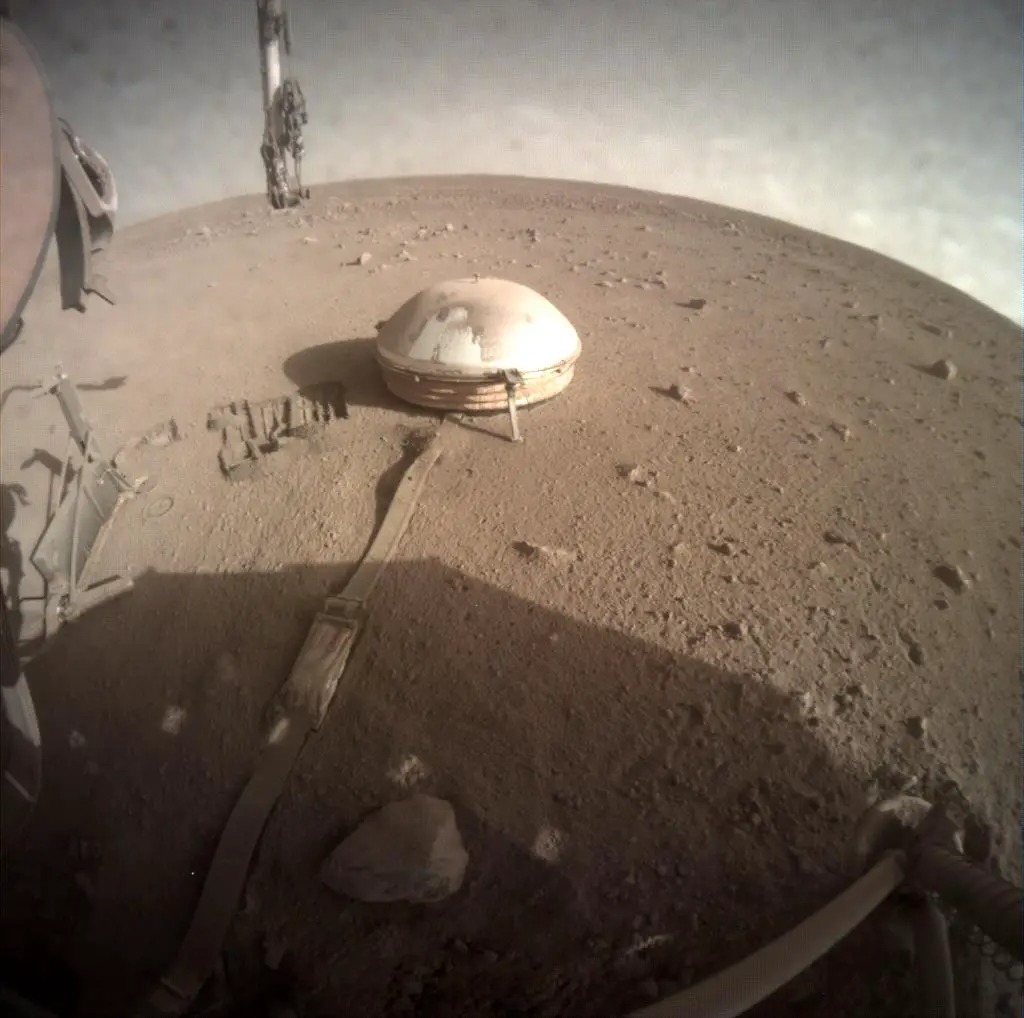
The InSight mission’s seismometer, though coated by several years of Martian dust, was able to capture recordings of seismic events from the far side of the planet. NASA’s InSight Mars lander acquired this image of the area in front of the lander using its lander-mounted, Instrument Context Camera (ICC). Credit: NASA/JPL-Caltech
“These first measurements of the elastic properties of Mars’ core have helped us investigate its composition. Rather than being just a ball of iron, it also contains a large amount of sulfur, as well as other elements including a small amount of hydrogen.”
The team of researchers used data from NASA’s InSight lander, a robotic spacecraft designed to probe the interior of Mars, to compare seismic waves traveling through the planet’s core with those transiting Mars’ shallower regions, and model properties of its interior.
The InSight lander deployed a broadband seismometer on the Martian surface in 2018, allowing for the detection of seismic events, including marsquakes and meteorite impacts. The multi-disciplinary team of scientists, including seismologists, geodynamicists, and mineral physicists, used observations of two seismic events located in the opposite hemisphere from the seismometer to measure the travel times of seismic waves that pᴀssed through the core relative to seismic waves that remained in the mantle.
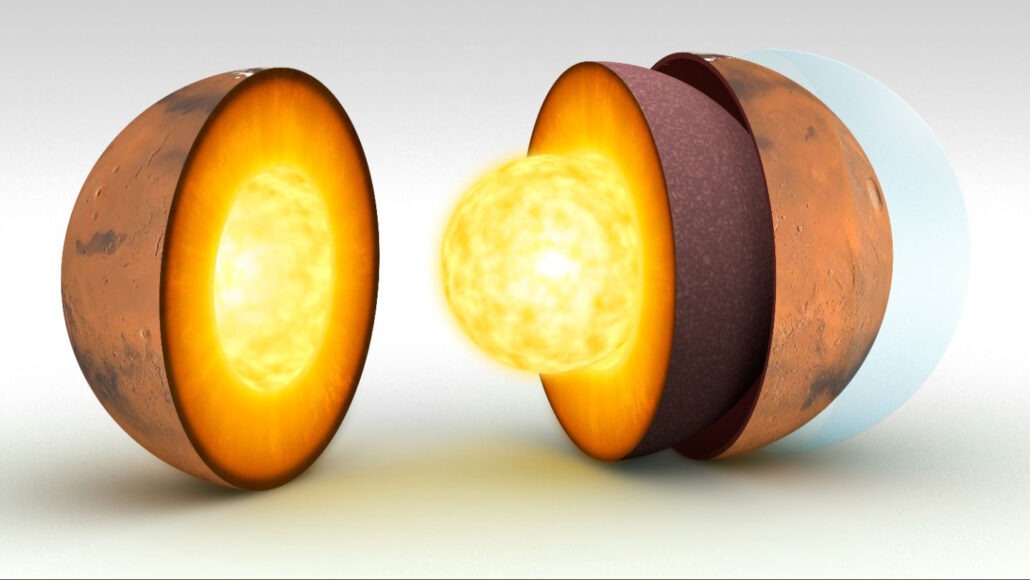
Dr Irving said: “So-called ‘farside’ events, meaning those on the opposite side of the planet to InSight, are intrinsically harder to detect because a great deal of energy is lost or diverted away as waves travel through the planet. We needed both luck and skill to find, and then use, these events. We detected no farside events in the first Martian year of operations. If the mission had ended then, this research couldn’t have happened.
“The sol 976 marsquake was the most distant event found during the mission. The second farside event, S1000a – the first event detected on day 1,000 of operations – was particularly useful because it turned out to be a meteorite impact which we heard all the way through the planet, so we knew where the seismic signals came from. These events came after the Marsquake Service (MQS) had honed their skills on hundreds of days of Martian data; it then took a lot of seismological expertise from across the Insight Team to tease the signals out from the complex seismograms recorded by the lander.”
The authors used these measurements to build models describing physical properties of the core, including its size and elastic wave-speed. The results suggested Mars’ core is slightly denser and smaller than previous estimates, with a radius of approximately 1,780–1,810 km. These findings are consistent with the core having a relatively high fraction of light elements alloyed with iron, including abundant sulfur and smaller amounts of oxygen, carbon, and hydrogen.
Co-author Ved Lekic, ᴀssociate Professor of Geology at the University of Maryland College Park, in the US, said: “Detecting and understanding waves that travel through the very core of another planet is incredibly challenging, reflecting decades of efforts by hundreds of scientists and engineers from multiple countries. We not only had to utilize sophisticated seismic analysis techniques, but also deploy knowledge of how high pressures and temperatures affect properties of metal alloys, leveraging the expertise of the InSight Team.”
Dr. Irving added: “The new results are important for understanding how Mars’ formation and evolution differ from those of Earth. New theories about the formation conditions and building blocks of the red planet will need to be able to match the core’s physical properties as revealed by this new study.”
Dr. Jessica Irving and co-author Dr. Anna Horleston, a seismologist from the University of Bristol, were supported with funding from the UK Space Agency.
Reference: “First observations of core-transiting seismic phases on Mars” 24 April 2023, Proceedings of the National Academy of Sciences.
DOI: 10.1073/pnas.2217090120
This research was supported by NASA (Grant Nos. 80NSSC18K1628 and 80NSSC19M0216) and the SSERVI Cooperative Agreement. This story does not necessarily reflect the views of these organizations.
